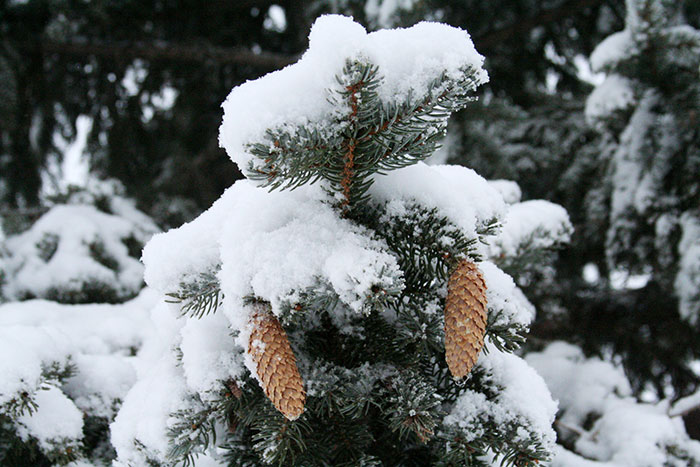It’s supposed to be spring |
| By Hay and Forage Grower |
|
|
|
In the South, there are complaints of temperatures in the 50s. Those in the North are doing the same about lows in the teens and frequent snow showers. In both cases, spring is slow to get out of first gear in 2018. Coupled with the cool temperatures have been dry conditions in many areas that have persisted for most of the winter. What does all this mean for forage growth? Well, the two most popular words I’ve heard from Georgia to North Dakota and parts in between are “slow” and “nonexistent.” The ramifications are still not fully known, but at this point there are some things both haymakers and pasture managers need to be cognizant of. Hay Even with the cool conditions, at least some reports of alfalfa being cut in the South have been reported. In the North, alfalfa is still thinking about breaking dormancy. This makes evaluation of winter injury and survival nearly impossible at this point. The spring ritual of alfalfa evaluation is tricky under normal conditions but may be even more challenging this year. If I’ve learned anything over the years, it’s that an alfalfa assessment made too early can be wrong. Further, the right answer may be better or worse than those conclusions made by an assessment done too early. In some cases, severely winter-injured alfalfa may initially produce shoots that soon die back. Those shoots can be the last vestige of life from those plants. For this reason, monitor fields several times during early spring rather than make a final judgment based on one, early evaluation. Conversely, alfalfa plants that had crown buds (formed in the fall) killed over winter may be very slow to show new growth that will develop from new buds. It’s important to allow adequate time before making a final assessment. That usually means at least 6 inches of growth is needed. Unless weather conditions turn warm soon, accurate stand evaluations will be much delayed. Even so, don’t be too quick in making a final judgment. It’s also prudent that haymakers recall the impact that temperature has on forage quality. If cool conditions persist throughout the spring, this may be a benefit for first-cut forage quality but will likely result in lower than normal yields and a delayed harvest. On the flip side, if it’s one of those years when temperatures flip quickly into full-blown summer mode, that’s a recipe for lower forage quality unless plants are monitored closely. The moral to this story is that temperature has a profound impact on harvested forage quality, especially fiber digestibility. Pastures The late spring has not been a welcomed gift from Mother Nature for pasture managers as well. Extending the hay-feeding season always has economic consequences. In a recent blog post from the University of Illinois’ Travis Meteer, he states, “Many cattle owners are struggling to stretch an already short hay supply.” Meteer notes that the lure to turn cattle on pastures too early has consequences. “Plants need the opportunity to establish a good root base,” says the extension educator based at the Orr Agricultural Research & Development Center. “Grazing plants too early and too often can deplete root reserves and result in poor pasture performance for the remainder of the year. The aboveground growth is a good gauge of how much root growth is occurring under the surface.” In an effort to stretch hay supplies, Meteer suggests the following strategies: • Limit hay waste with improved feeder designs or by restricting access to hay for only six to nine hours per day. In the case of the latter strategy, supplement cattle as needed. • Market or cull some animals now instead of waiting a month or two. • If feeding a supplement, also consider adding an ionophore to improve feed efficiency. These same pasture challenges have existed throughout a broad stretch of the United States. In some cases, it has been waiting for cool-season annuals to awake and begin a rapid growth cycle. It will soon be a case of warm-season grass delays unless weather patterns change. Regardless of the situation, putting cattle on grass too early always translates into a short-term fix that creates a long-term problem. Let’s hope this weather turns quickly for the sake of all forage producers. |

